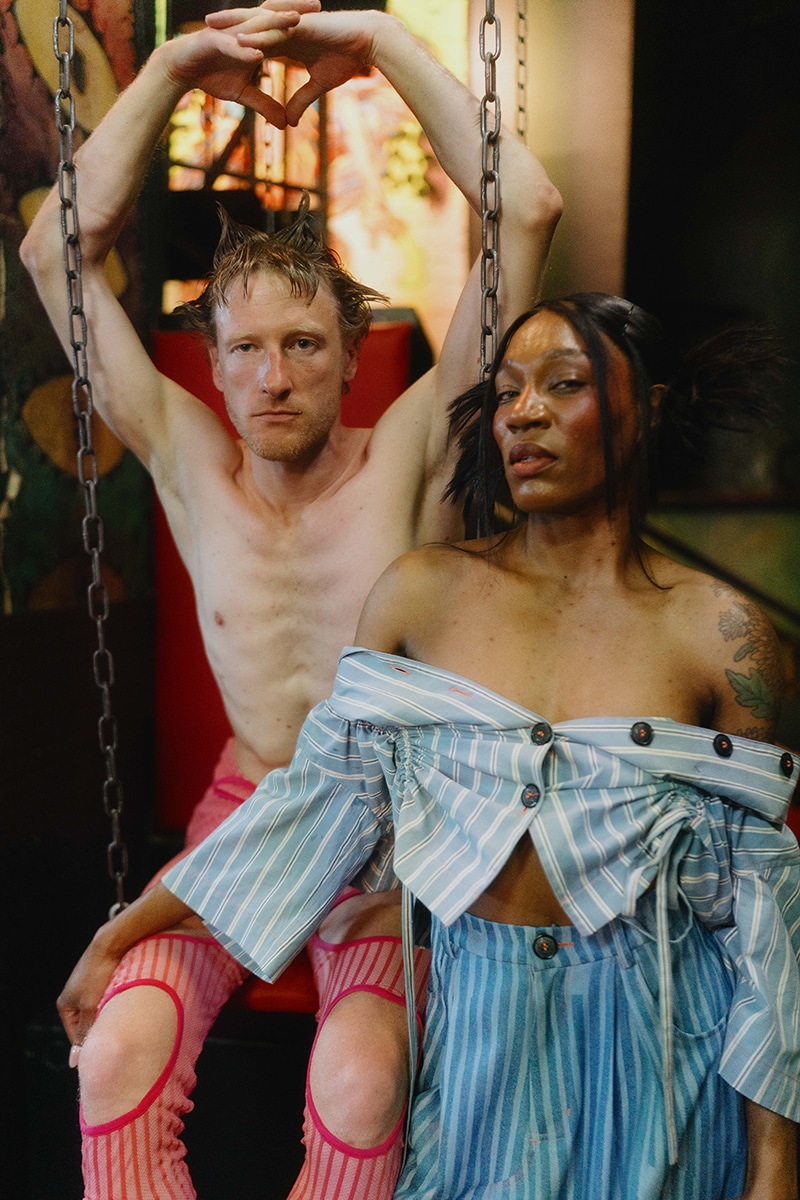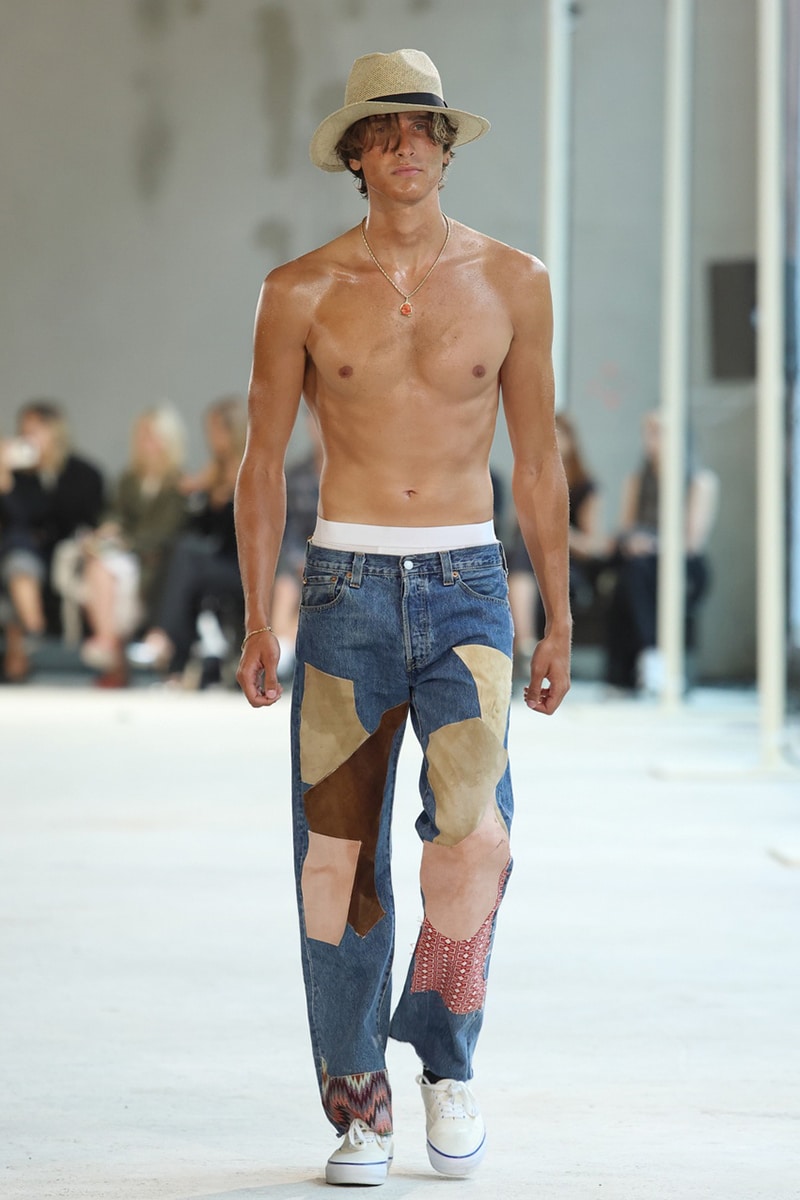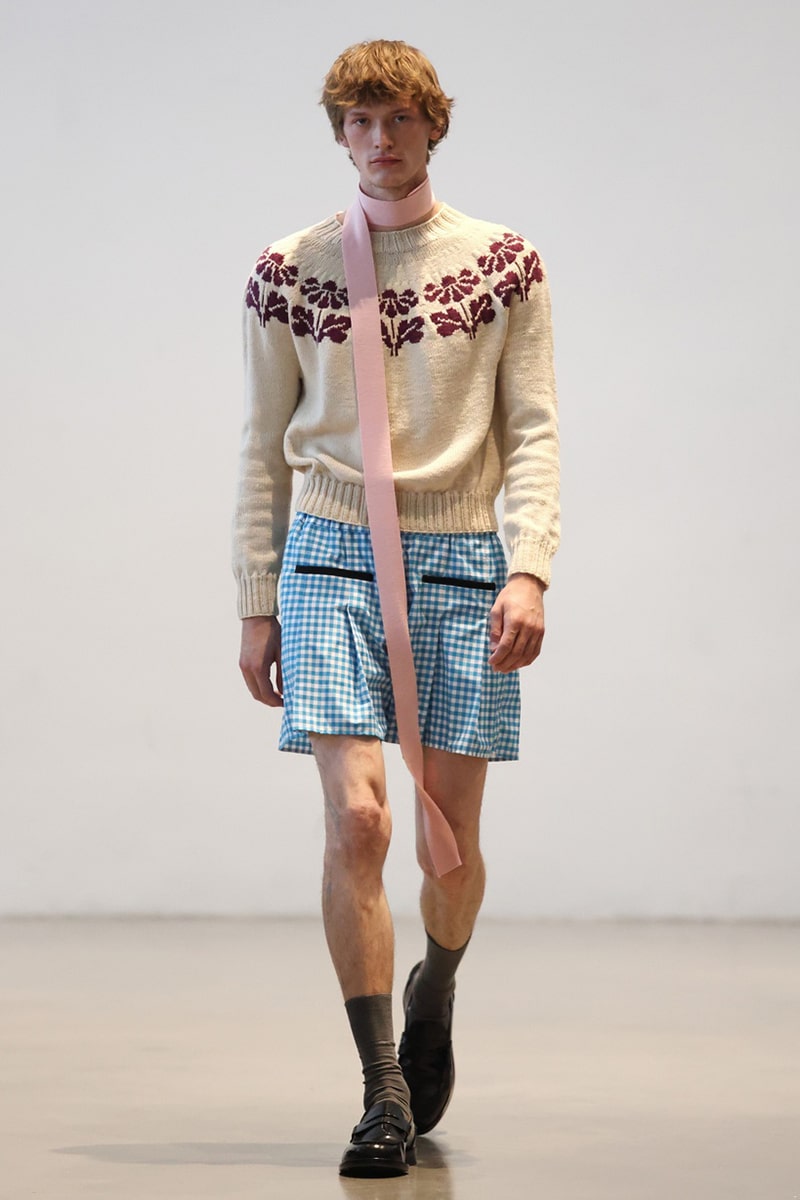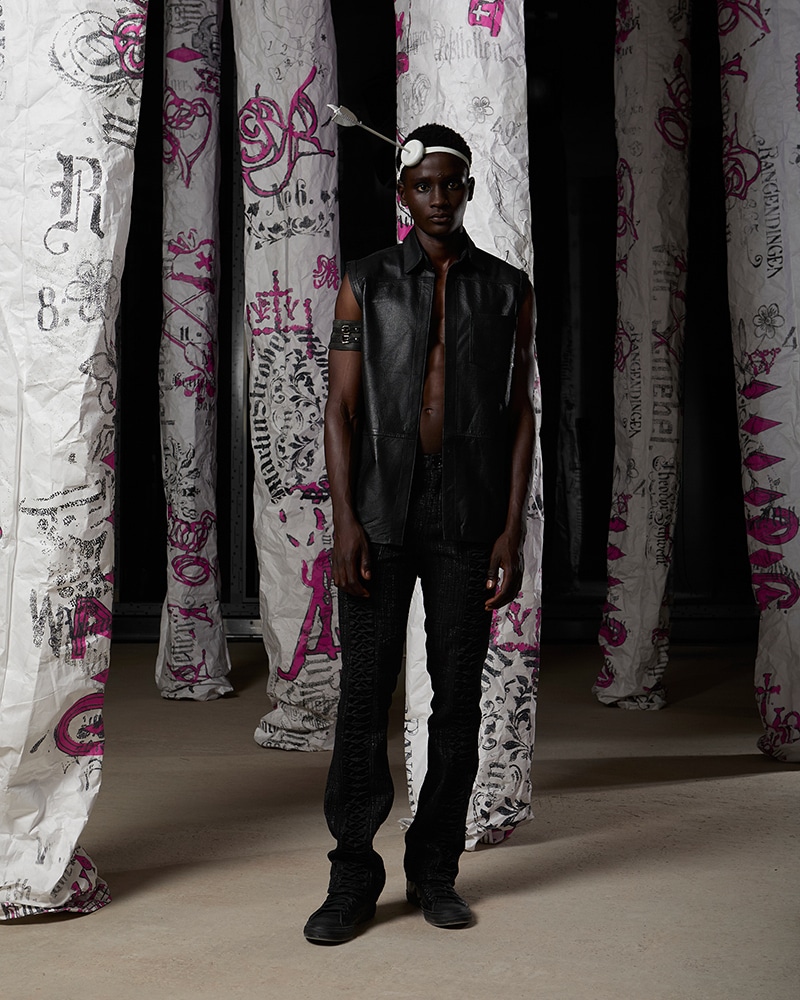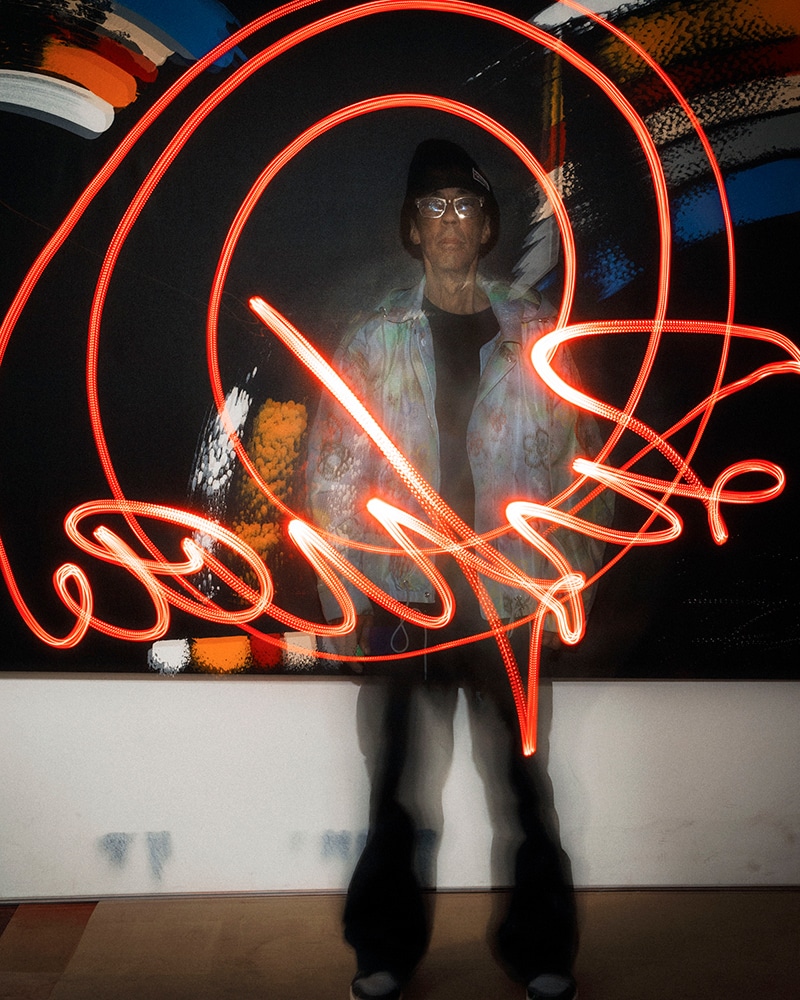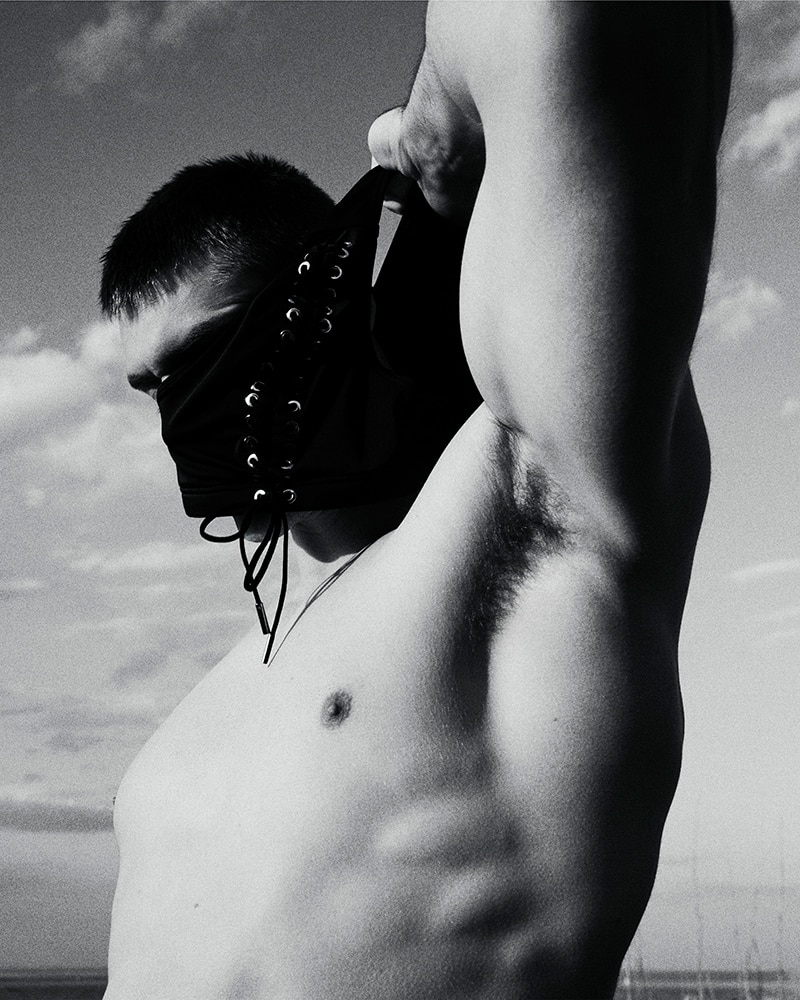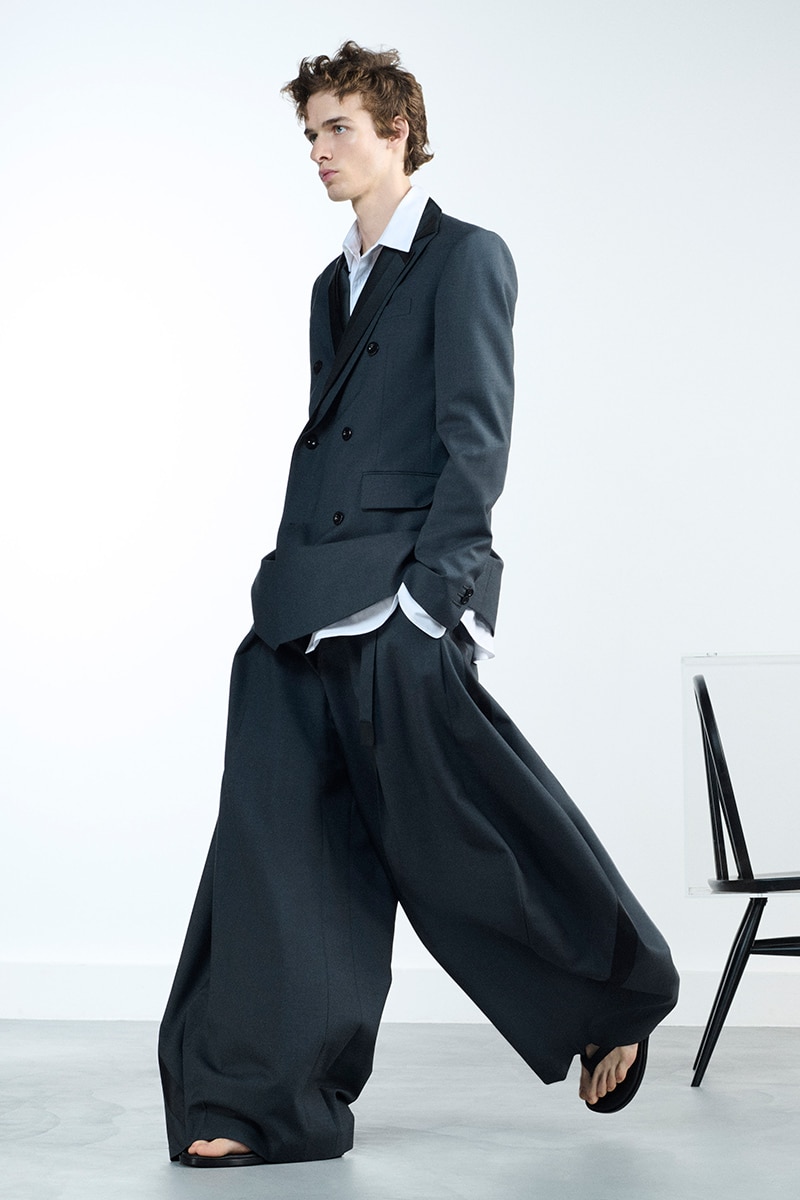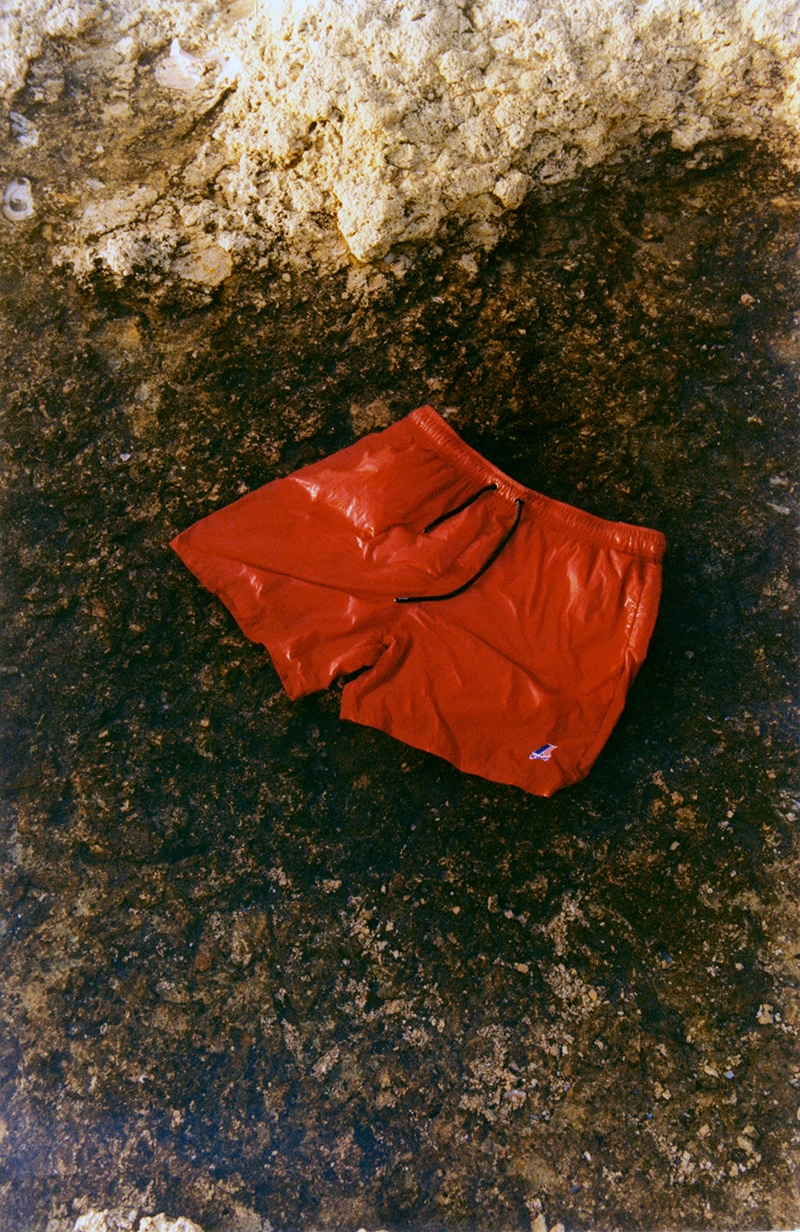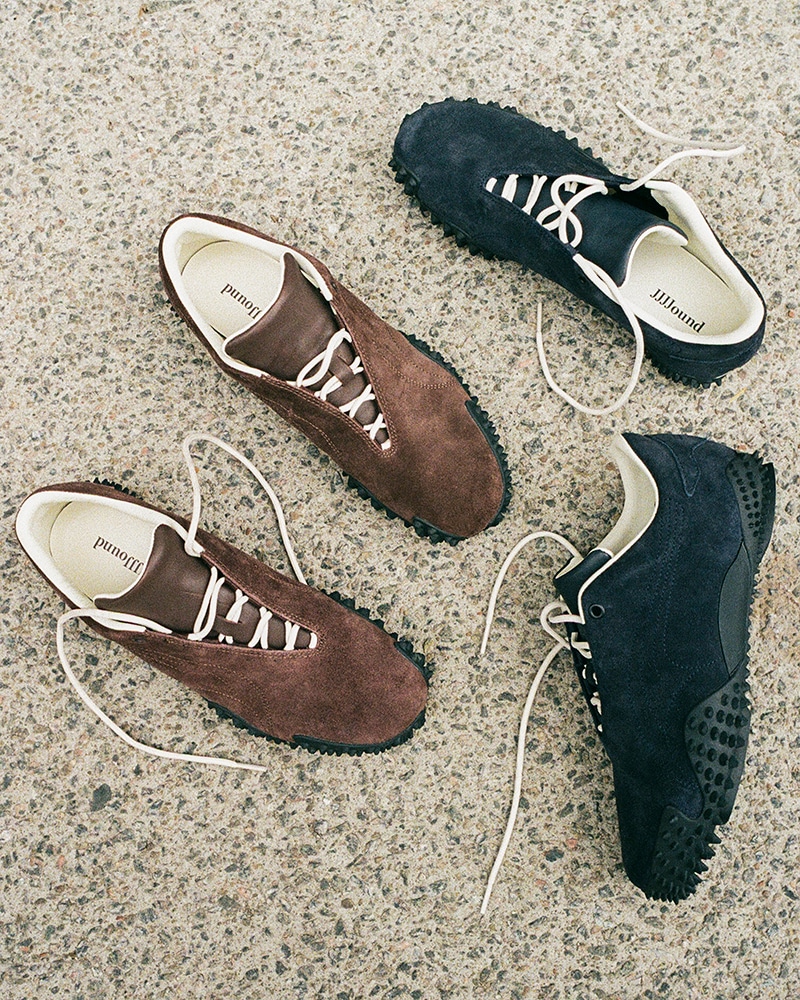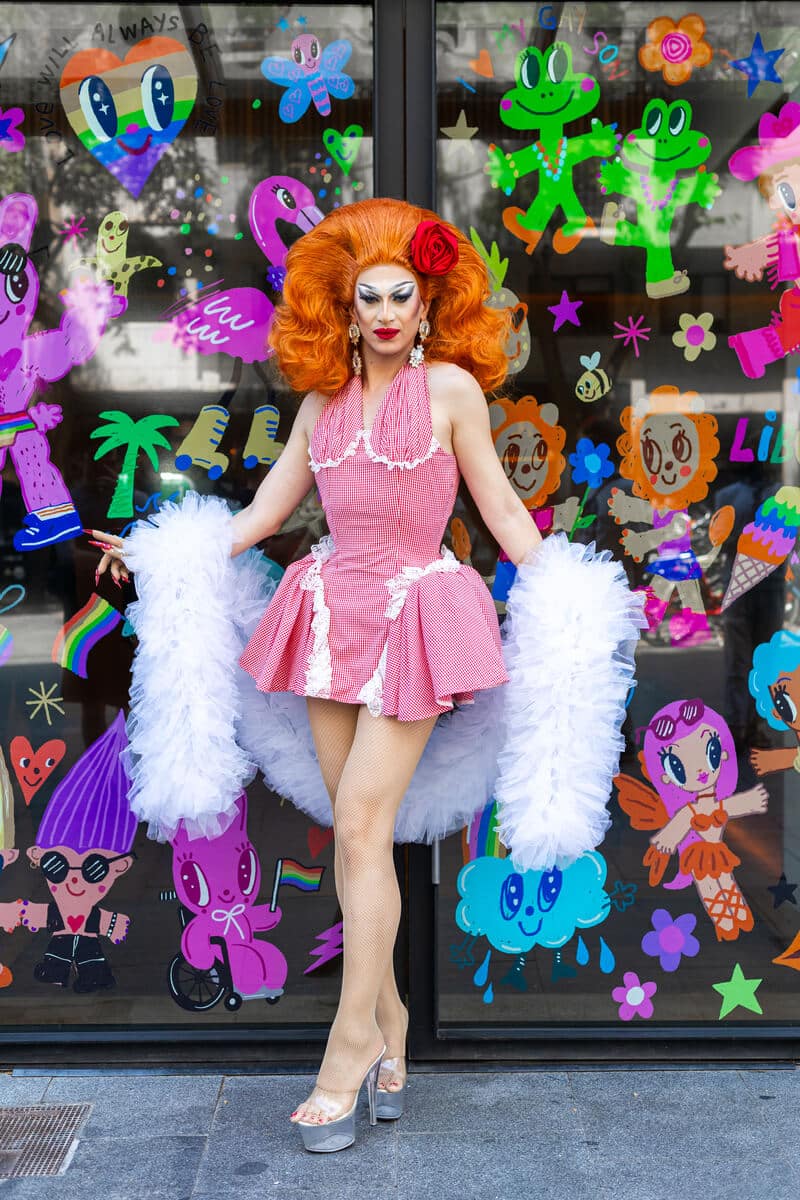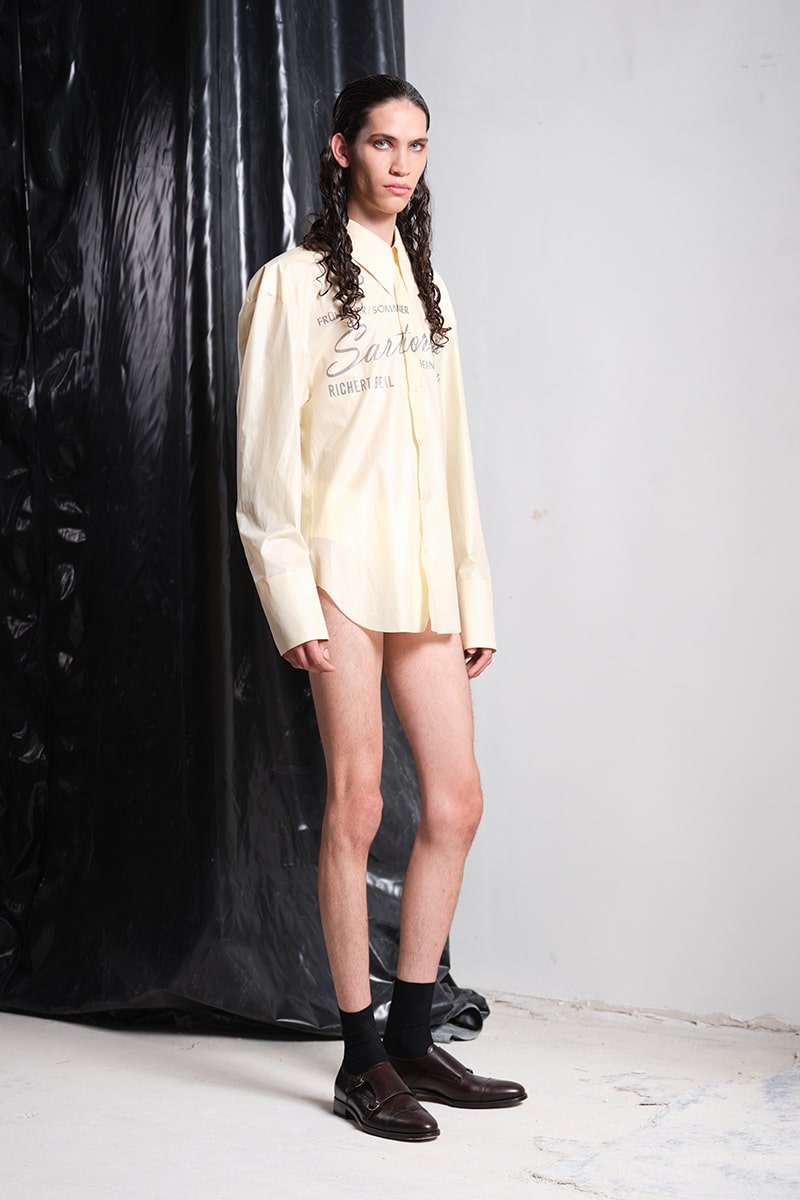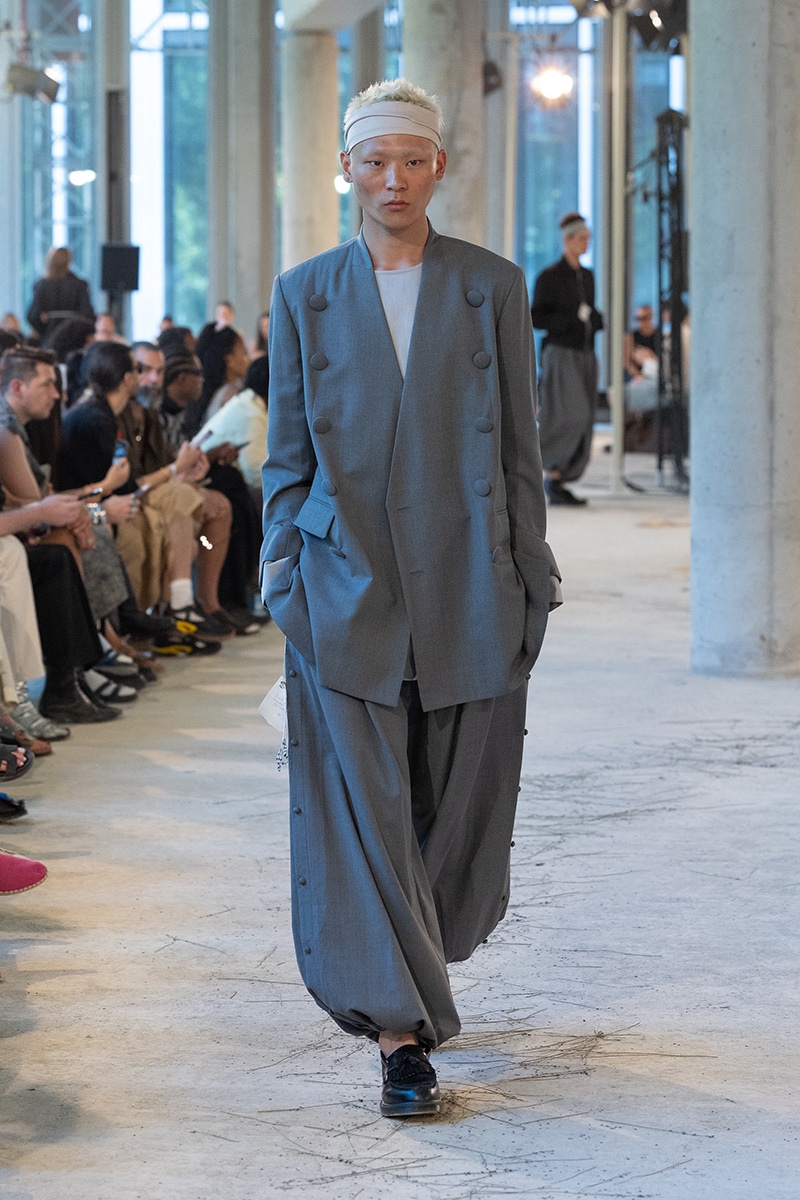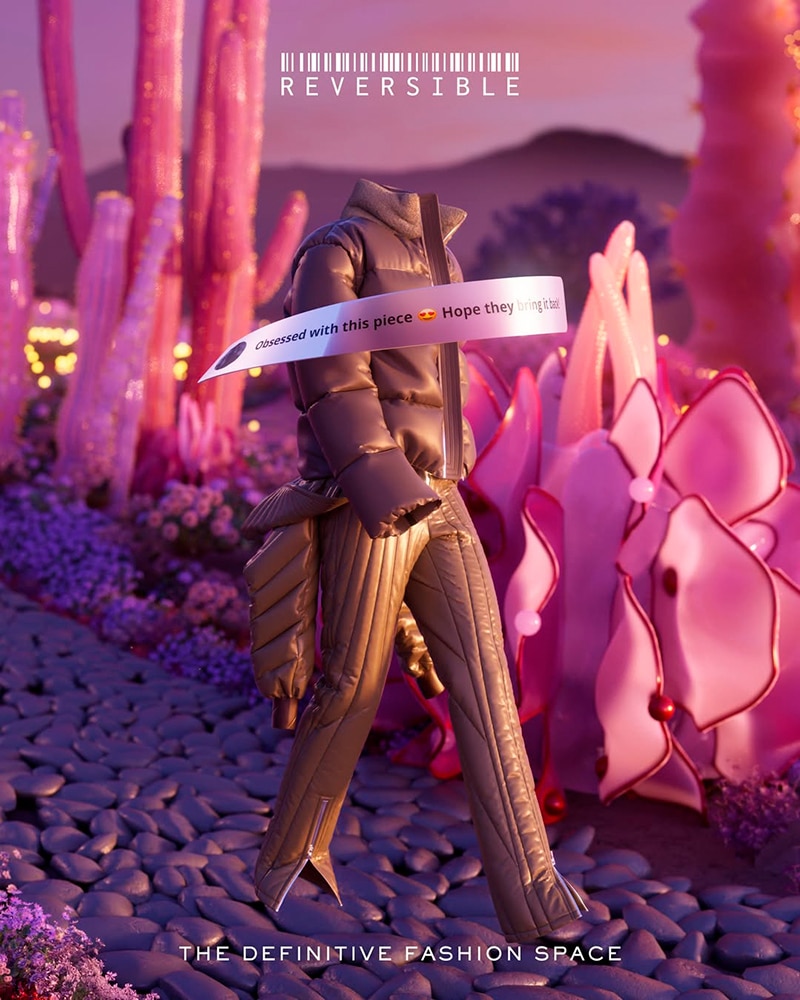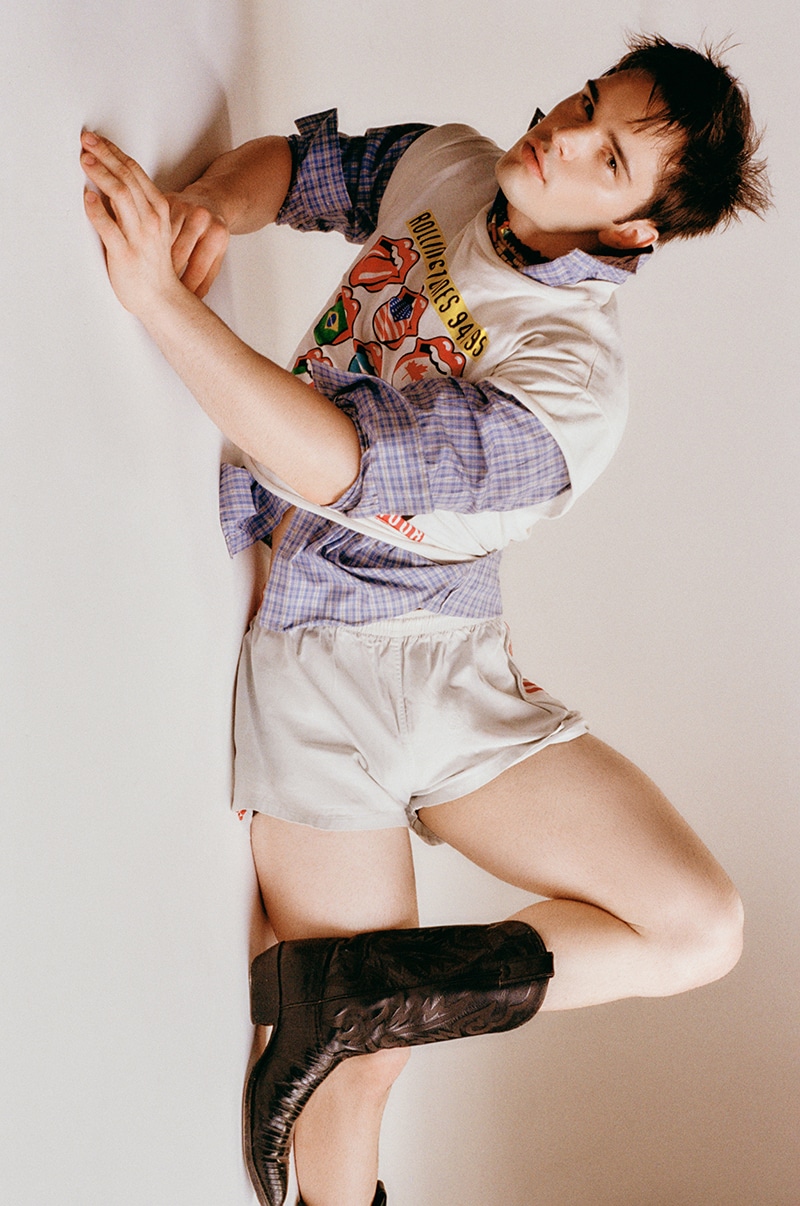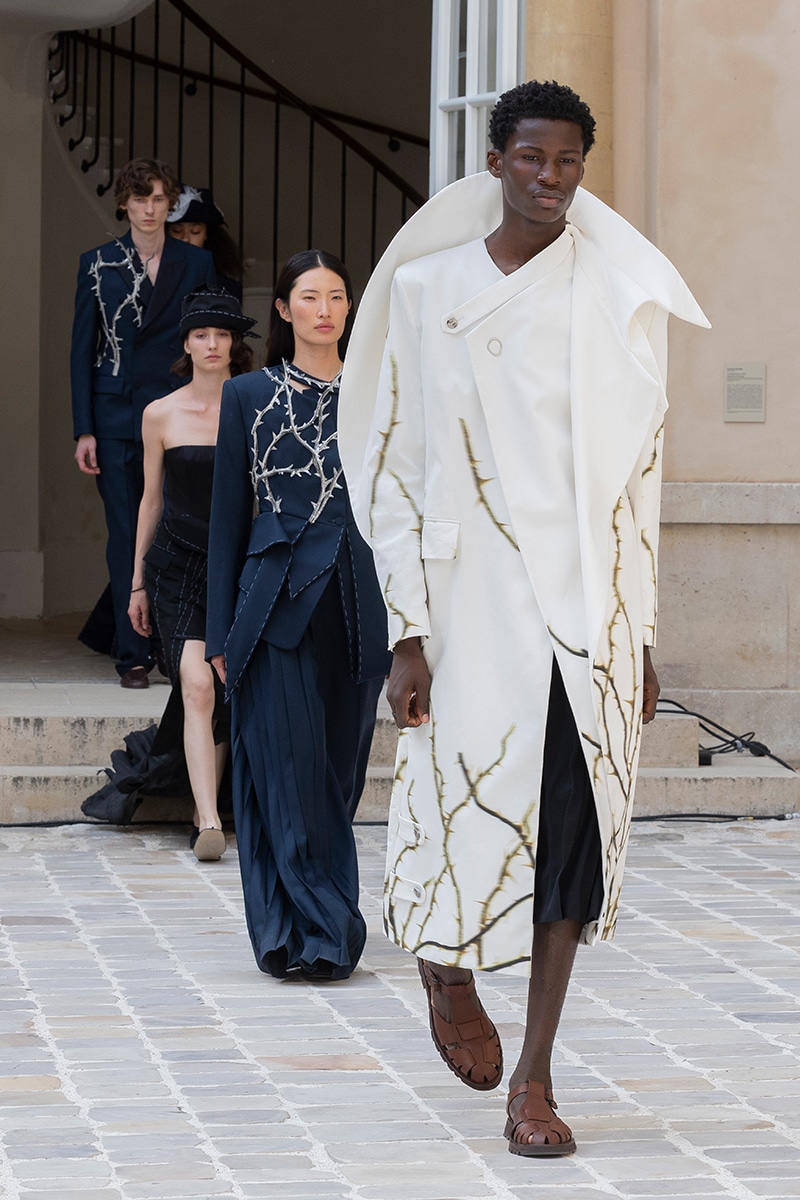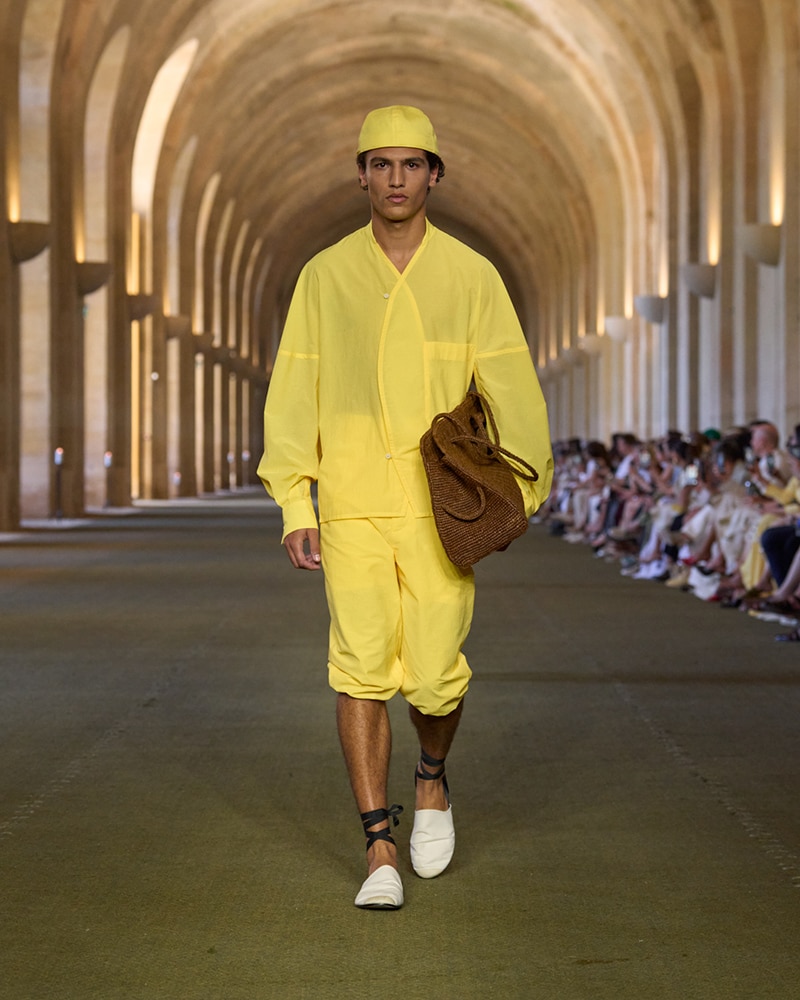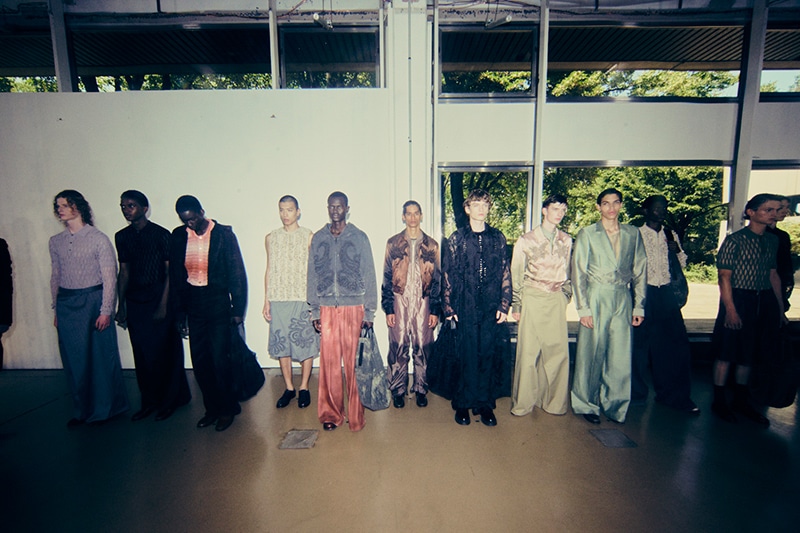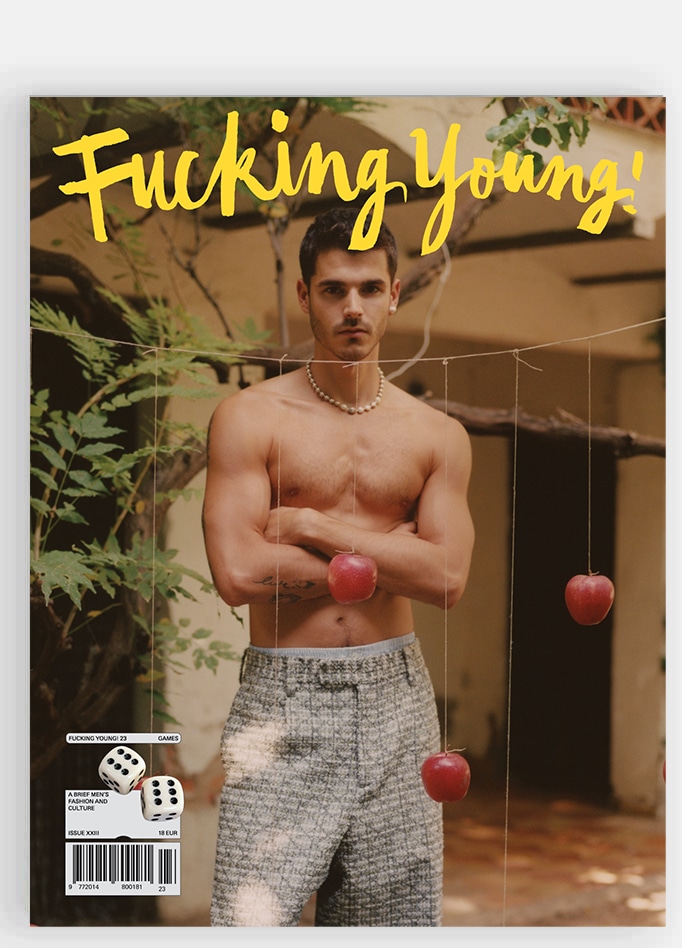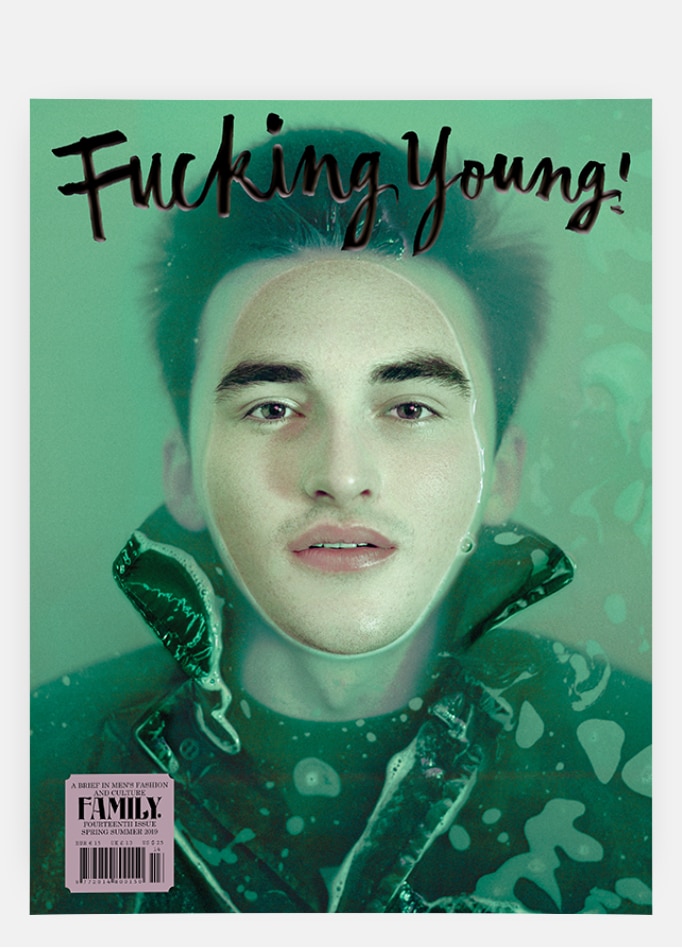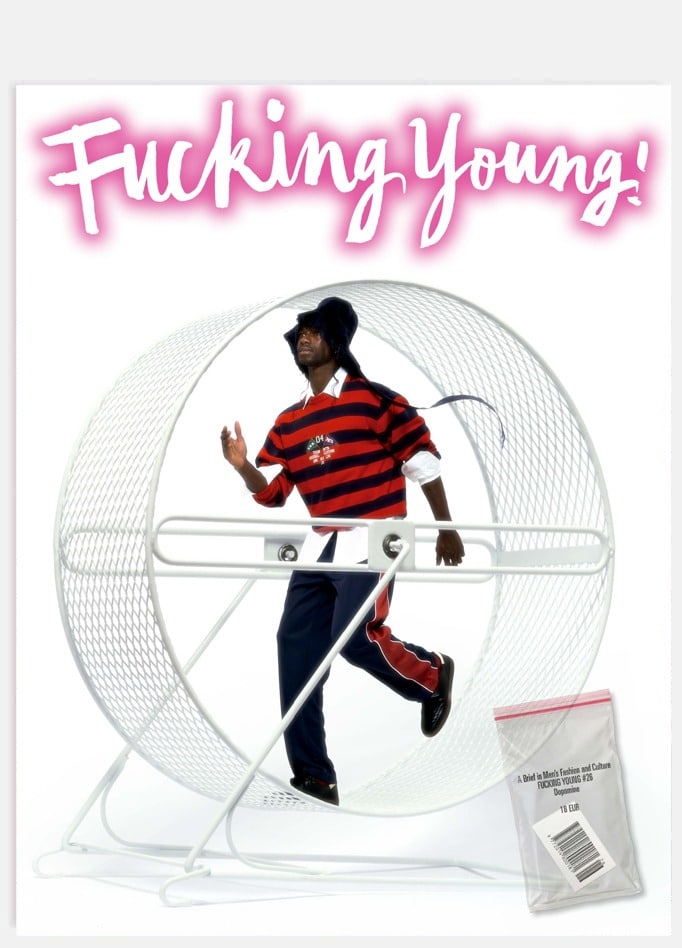
“Every great architect is – necessarily – a great poet. He must be a great original interpreter of his time, his day, his age”. – Frank Lloyd Wright
The words of the great American designer seem as an exhortation to the future generations to make architecture an art form. Ron Arad captures the sense of this reflection, appropriates and contextualizes it, renews its sense.
Sixty-five years old, Israeli by birth, English by adoption: in 1981, Mr. Arad became famous for creating the Rover Chair. He was Head of Design Products Department at the Royal College of Art from 1997 to 2009. In 2008, the designer paired with Kenzo to create his first perfume bottle. Two years later, he started his collaboration with New Eye London to design an eyewear collection.
We met him some weeks ago to speak about his life and his project in partnership with pq, an eyewear leader company that combines technology, design and, of course, art.

Fucking Young!: Dear Ron, one of our main themes of the magazine is the evaluation between fashion and youth culture. What is your relation to youth culture? Do you still relate to it at all?
Ron Arad: We all have a relation to everything around us. There is youth all around us and we are around them. Now I tend to be outside the youth culture, although once I was definitely within it. We have more perspective and a lot more experience and we are very excited about the ideas that come from young people. Their experience of the world opens us up. I mean, it’s in music, art and every subject. I don’t think that one is more valuable than the other. I think it’s all continuity. And I happen to be the old expression in my studio.
FY!: Reading your talks with Matthew Collins, I discovered you were a Bob Dylan fan, and a “Blow-Up” connoisseur, dreaming of moving to London. How were your teenage years? You talked about London in the interviews and your fascination it exerted. It reminded me of the relationship from the young Fellini with Rome. Is that anything you can relate to?
RA: It’s funny that you mention Roma. I’m just customizing a Fiat for an auction. So, the left word here on my screen is Roma and now you’re speaking about Fellini and Roma to me – fantastic! I mean, like every teenager, we are privileged, spoilt, an entitled brat, thinking that we are the center of the universe. And whatever we don’t know is not worth knowing. You think you know everything. And a lot of things and a lot of ideas from teenagers here to present still exist. Actually, I think I’m the same person as I was when I was 18 years old.
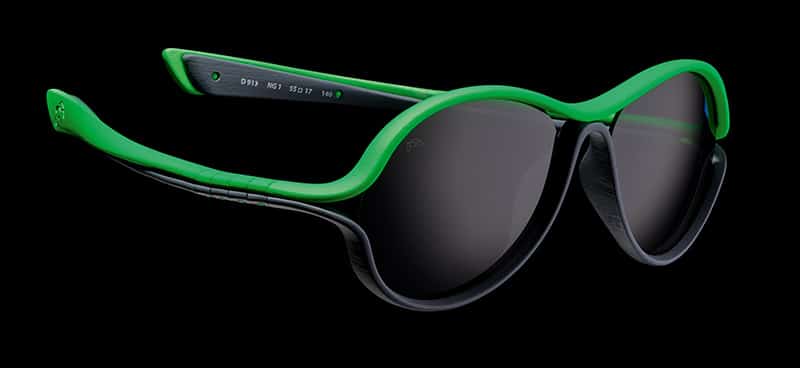
FY!: For how long have you been dreaming about moving to London?
RA: It wasn’t really about moving to London. I had the image of London that was formed by British cinema and was formed by music. London seemed like a really exciting place and something in England seemed to be more interesting than America. An English film seemed to be a higher art than Hollywood films. It’s false, of course it’s not true. But that is the way we saw it. So I found myself in London because I thought I could speak English, but when I came here I realized that it wasn’t really English, it was American.
FY!: Alright, the next question is: You seem to be a fashion designer’s favorite and you were kind of discovered by Jean Paul Gaultier. The Face and ID magazine loved you and featured you constantly in the 80’s and you worked with Miyake, Yamamoto and Dolce & Gabbana, just to name a few. What is the difference between working for designer companies like Magis or Moroso and working with a fashion designer? Is there a difference?
RA: There is a difference. I mean, first of all, I never worked for a special company. I designed the Yamamoto store, in Tokyo, and I collaborated with Miyake on art, but I didn’t do fashion with him. And the difference is that when you do a chair for Vitra, it’s still valid 20 years later. In fashion, every season you have to come up with new things to survive. Fashion is constantly moving. It tends to move and it needs to move to survive because it’s based on the fact that people have to buy new things every season. That is the economy of it. And if you think about glasses or eyewear, it’s different than working for the furniture companies because there are fairs at least twice a year and every time you have to move on and do new things. But that’s not a problem because we have more ideas than the industry can take. The industry, the production and the marketing is slowing down. Fashion is directly connected to people’s image of themselves. I mean, you go to a restaurant and you sit on a chair that was given to you. Sometimes you’ll move into a rented place and live with the furniture that has been inherited. No one moves into a rented places and opens the wardrobe and discovers what they are wearing. With fashion, especially glasses, it’s like what you believe your message is like for the world and this is what I look like. Plus there are all the other practical things. Glasses must improve your sight and have to be comfortable. People with [eye] dysfunction have frames on their face all day long, so they have to be good. Regarding the Jean Paul Gaultier anecdote, I wasn’t actually “discovered” by him. He simply had a nose for what is about to happen. He was the first one to buy the rover chairs and he bought them for his private place.

FY!: Okay, can you tell me the story of your hat, which became your signature piece? Is there a story? Talking about clothes in general, what is your relation to formal wear and dress codes? I see in photos that you never wear a formal suit.
RA: I have always liked hats, but hair is much better than hats. Unfortunately I have to resort to hats. It’s very difficult today because if I go out without a hat, it attracts more attention than if I go with a hat. So wearing hats doesn’t attract attention. I don’t have any suits and I don’t have a tie. In various places you go there is someone at the door and they tell you there is a dress code and you can’t come in, so I’d rather not be there. In a lot of cities and in fashion too, you are told what to do, by all sorts of fashionistas and writers. Part of my youth culture, if I go back to that, was not to be told what to do. But it’s a longer discussion than a telephone conversation.
FY!: Moving onto eyewear you said something like that eyewear is in a way a mask that you could wear. Can you explain that?
RA: When people put on glasses and when they look in the mirror, they think it makes a difference: “I look stupid here or I look sad.” They think it helps or think it’s an extension of their physique and their expression. Indeed, one of the first frames I did was one where you could adjust the expression. You can tilt them so they look or appear sad.
FY!: pq is born out of the rejection of the vintage approach that often reigns in the eyewear design world. Can you tell us more about your allergy for vintage and how it has been expressed in your eyewear?
RA: I don’t have a problem with vintage. I love vintage. I mean, one of my favorite eyewear shops in the world is about 100 meters from here in Camden. It’s called General Eyewear and I go there and I see some stuff that is fantastic, amazing vintage stuff. Yes, you can look at it and it can trigger an idea but the last thing you want to do is a prestige of that. I have no problem with vintage. I have no problem with people wearing vintage. I have a problem with people reproducing it. What’s the point? It’s not interesting for me. Maybe there is a point. Maybe there is a commercial point. But like the change in the industry, like in the eyewear industry, they tend to do the same all the time. I think I discovered that there is a lot to do and much to invent in the frames without converting you into a liberator and without attracting stupid attention, but to make something better, nicer and easier and all of this blablabla.
FY!: And can you tell me about the design process of a pq eyewear piece? For example, how did the B-Frame collection come to life?
RA: You know the main thing about the B-Frame is that it is made out of one piece and out of one material. There are no screws, no hinges and no connection between two materials. It’s monolithic, it’s one piece and it relies on the flexibility of the material, which you need from one direction and you need stiffness on the other, so it has a vertebrae. The technique we are using to make them gives you the freedom to scalp them as you want.
FY!: How do you proceed when designing them?
RA: I sketch and I talk about them and then we model them and look at prototypes. Then we reassess them, improve them, change and then we perfect them.
FY!: Okay and one of the things that strike me is the sense of color that permeates your collection. Is it related to your activity as a designer or is it to match the fashion needs. Often in fashion color is king?
RA: All colors are good. It depends on what goes with what. But, you have to choose colors for things. For me, it’s always the least favorite activity to choose a color for a piece of furniture. This is because by choosing one color, you don’t choose all the others. There are no big colors.
FY!: Okay, so Fucking Young! was born as an online magazine and was made possible due to the internet. What is your relation to online and social media? Were you an early adaptor or skeptical about it?
RA: An early skeptical. My cat is on Facebook. That means that I can check all my things I like to check and I hide behind my cat. Also my late grandfather has an Instagram account. No one knows about it, but me. And I think the studio has accounts too. I confess I check Instagram. I check what pieces of mine and what things which are related to me are posted on Instagram. And it’s quite interesting to see the ways of what people are interested in. And I mean, we are all addicted to our phones and tablets. It has bad and good sides. I think it’s fantastic for old people. What would I do without Skype when my father was 95? Like everything, it has a lot of good and a lot of bad.
FY!: After glasses would you also like to design a prêt-a-porter collection?
RA: It’s not on the agenda, but who knows?
FY!: Okay, here is our last question and we always ask this: You have the claim “antiordinary” for pq eyewear and we have the claim FUCKING YOUNG!, which means over the top young. So what is fucking young for you?
RA: I think it’s FUCKING YOUNG!. Enjoying! Enjoy the fucking and be young.
